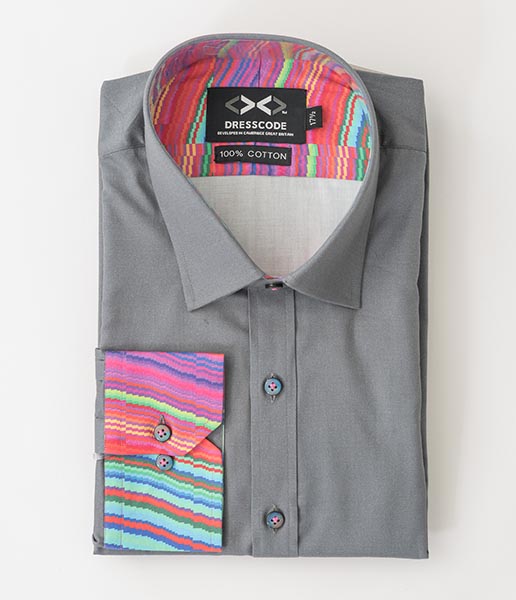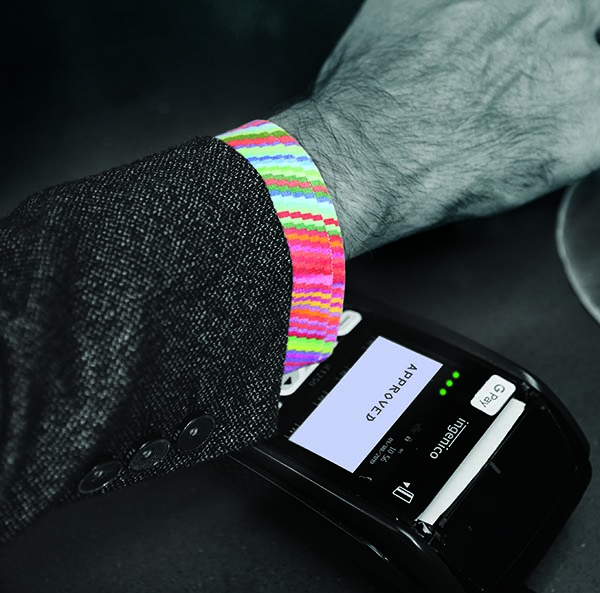All kinds of wearable technologies are becoming available in the market, some more convenient to use than others. How about a dress shirt with built-in payment technology that eliminates time-consuming cash payment or the risk of losing your wallet? That’s what Dresscode Shirts is all about!
 Founder and CEO Andy Boothman explains, “There is a huge swath of society that is completely ignored by fashion, including people engaged with developing tech devices and otherwise involved in the tech world. There is some crossover with wearables, but a lot of them don’t connect with developers’ values. We thought there was something we could do to address that.”
Founder and CEO Andy Boothman explains, “There is a huge swath of society that is completely ignored by fashion, including people engaged with developing tech devices and otherwise involved in the tech world. There is some crossover with wearables, but a lot of them don’t connect with developers’ values. We thought there was something we could do to address that.”
Boothman, whose day job for the last 23 years was in brand consulting, shares the story of the company’s founding: “One day we were proofing a job on press, and the printer had some sort of problem in the middle of the proofs. There was a lot of tough language and hard work directed at the press, and I expected we would just toss the faulty output into the bin. But actually, it had a kind of aesthetic that was appealing to me, so I took some snaps of it and put it on my social media, asking people what they thought of this art created by a computer glitch. Most thought it was cool, and that was the beginning of Dresscode Shirts.”
In fact, Dresscode has a shirt called Glitch that uses some of these designs, as well as some more conventional looks. All have the CashCuff contactless payment system incorporated.

Dresscode Glitch shirt.
In thinking about bringing products to market, Boothman notes that he spent a long time looking at what he could do that wouldn’t result in a flash in the pan—a phenomenon that is all too common with wearables. “Wearables was always something we had an inkling we would want to do,” he says. “It’s a very busy space and the drop-out rate is incredibly high, some giving up as soon as 8 to 12 weeks. We wanted a more sustainable product that would add value and make processes easier.”
Boothman settled on making payments easier with the CashCuff shirts. He comments, “We thought if you could just pay for things with your shirt, it could make life easier, especially in fast-paced retail environments such as coffee shops or fast food restaurants, where paying by cash and waiting for change takes time, as does credit card payment. We thought building in a contactless payment capability into the shirt cuff would be a unique and very valuable approach. Retailers love it; it addresses their pinch points such as early morning and lunch time, getting more people through the door. And for the customer, using cash and getting change can be a hassle—who wants to carry around a pocketful of coins?” The company has also worked to ensure the security of the solution, so users do not feel they are being data-managed to death.

Dresscode CashCuff shirt.
The next step was to get the technology lined up. Boothman continues, “We spent a lot of time learning about the ecosystem and the way in which it works, the barriers to entry, security issues, etc. We found a couple of great globally-recognized partners that aligned with our values, and it is fantastic what they can do.” Boothman points out that contactless payment is big in Europe and just beginning to catch on in the United States. In some areas, a PIN is still required to validate identity, and that can be incorporated if need be, but the company’s key focus is Europe where contactless payments are widely available and widely used. The technology functions with any terminal that supports contactless payment.

The CashCode benefit.
In terms of the shirts themselves, Boothman sourced print and production in India, working with a fourth-generation tailoring family to manufacture the 100% cotton shirts. All required printing is done digitally on fabric by the yard at Morarjee Mills using Colaris textile printers. He chose cotton because it gives the garment extra longevity and keeps you fresh all day, noting that with polyester, you are more likely to get sweaty, and a shirt should keep you fresh. Although he admits that cotton is not the most sustainable crop, their cotton is sourced locally to where shirts are produced and the rest of the processes across the supply chain are designed to minimize environmental impact.
“As our volumes grow,” he notes, “we may have to look for some other manufacturing solutions, but we like the digital printing approach both from and quality and sustainability perspective.”
What’s next for Dresscode Shirts? Boothman states, “In the grand scheme of things, we are looking at other types of apparel, such as women’s shirts. We want to make sure whatever we produce adds value. With our shirts, we spent a long time finding the right material, ensuring the right sizing strategies, and making sure they are absolutely first-class quality. Some comments that have come back to me from customers include that they can’t believe how nice they are compared to high street brands, even exclusive brands. When you buy a shirt from a designer shop, you think there is a great deal of effort going into materials and construction; but the truth is they are churning out volumes, often with a shocking lack of quality.”
Dresscode is also looking at where self-scanning can work for sizing purposes as well as a few other technologies. “Watch this space,” Boothman says. “Whatever we end up doing next, we want to make sure we get the first one absolutely right and build the reputation out from there.”











Discussion
Join the discussion Sign In or Become a Member, doing so is simple and free